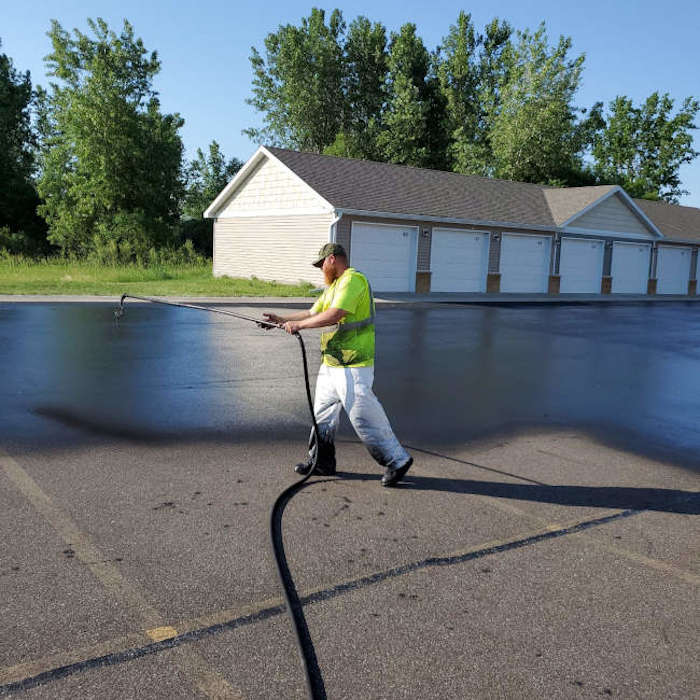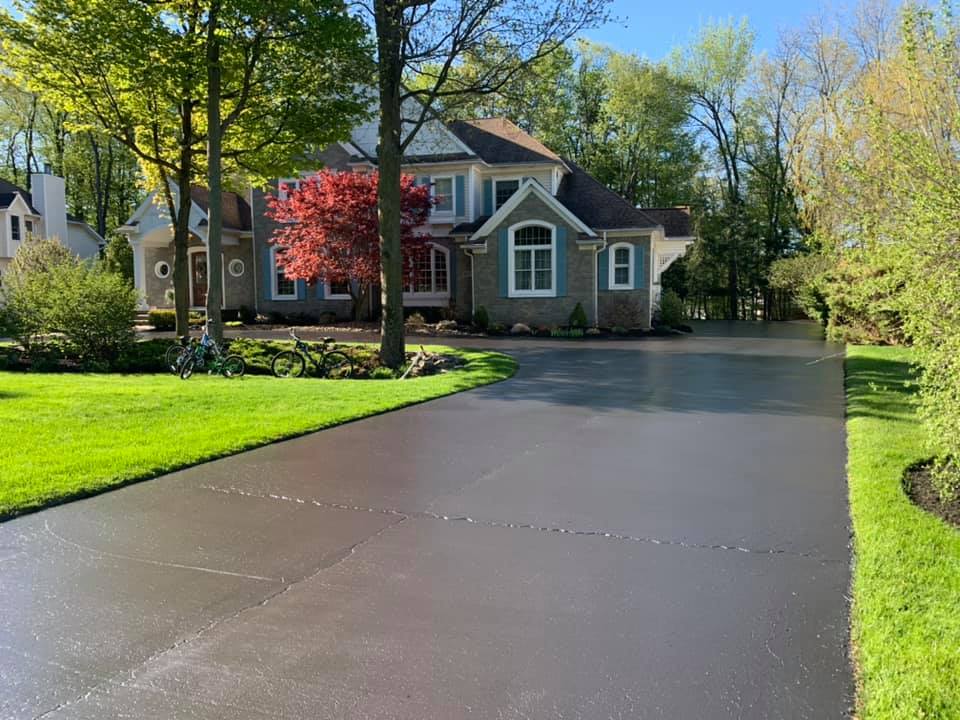Hot Mix Asphalt: A Lasting Remedy for Sidewalk
Warm Mix Asphalt (HMA) has become a leading sustainable choice for pavement services, using a myriad of ecological advantages and cutting-edge modern technologies. Its ability to recycle materials and decrease energy consumption presents a compelling case for its fostering in road building jobs. Additionally, the long-lasting performance and toughness of HMA make it a favored choice for infrastructure development. As the demand for environmentally friendly construction techniques expands, exploring the subtleties of HMA's sustainability can supply important insights right into the future of pavement solutions.
Environmental Advantages of Hot Mix Asphalt

Additionally, Warm Mix Asphalt assists to reduce urban warm island effects. Its dark shade takes in sunshine, minimizing the quantity of warm mirrored back right into the ambience compared to lighter-colored sidewalks. This can decrease ambient temperatures in city areas, lowering the demand for a/c and ultimately minimizing energy usage.
In enhancement, Hot Mix Asphalt contributes to boosted stormwater management. Its porous nature permits water to infiltrate the pavement and reenergize groundwater materials, lowering runoff and the risk of flooding. These environmental benefits make Hot Mix Asphalt a sustainable option for leading freeways and roadways.
Energy Performance in HMA Production
Is energy efficiency a critical consider the manufacturing of Hot Mix Asphalt (HMA)? Definitely. Energy plays a considerable function in the manufacturing of HMA, impacting both expense and ecological sustainability. One essential facet of energy effectiveness in HMA manufacturing is the use of cozy mix asphalt (WMA) modern technologies (commercial parking lot paving). WMA allows for the blending and positioning of asphalt at reduced temperature levels contrasted to typical hot mix asphalt, causing minimized power usage throughout production. This process not only lowers fuel usage however additionally decreases greenhouse gas discharges, making it an extra environmentally friendly choice.
Furthermore, improvements in plant innovations have actually resulted in more energy-efficient HMA production procedures. Modern plants are developed with functions like recycled asphalt pavement (RAP) processing capabilities, effective heater systems, and boosted insulation, all adding to power financial savings. By optimizing energy usage in HMA production, the market can minimize its carbon footprint while keeping high-grade pavement materials. Power effectiveness is, for that reason, a crucial consideration in ensuring the sustainability of Warm Mix Asphalt production.
Recyclability of Warm Mix Asphalt
The recyclability of Hot Mix Asphalt (HMA) is an essential facet of its sustainability and long-term ecological influence. HMA is one of one of the most recycled materials in the United States, with over 100 million lots of redeemed asphalt pavement (RAP) being reused every year in brand-new pavement building. Reusing HMA supplies several environmental benefits, such as minimizing the need for virgin materials, reducing power intake throughout production, and reducing the quantity of waste sent out to landfills.
The procedure of recycling HMA includes grating the existing sidewalk, squashing it right into smaller sized items, and blending it with brand-new accumulation and asphalt binder to create a recycled mix. This recycled mix can typically perform as well as or perhaps better than traditional HMA, while needing fewer resources and creating lower greenhouse gas discharges. By integrating RAP into new pavement tasks, roadway firms can preserve natural deposits, decrease costs, and minimize the ecological impact of roadway building and construction and upkeep activities. Generally, the recyclability of HMA plays a considerable function in promoting lasting techniques within the sidewalk market.

Long-Term Efficiency of HMA
Asphalt pavements show sturdiness and strength over an extended period, mirroring the long-term efficiency of Warm Mix Asphalt (HMA) The durability of HMA can be credited to its ability to stand up to heavy traffic loads, harsh weather conditions, and the results of aging. Studies have actually revealed that properly designed and effectively constructed HMA pavements can last for 20 years or more with normal upkeep. The secret to taking full advantage of the long-lasting performance of HMA lies in using high-quality products, adhering to ideal techniques in building and construction, and carrying out efficient maintenance strategies. Correct drainage, routine inspections, and prompt repair services are necessary for protecting the structural honesty of HMA sidewalks in time. Additionally, innovations in HMA innovation, such as the use of polymer-modified binders and warm mix asphalt, have actually additionally enhanced the resilience and long life of HMA pavements. By focusing on high quality construction and upkeep methods, HMA remains to prove itself as a affordable and sustainable service for lasting pavement framework.

HMA: Resilience and Sustainability
Demonstrating both longevity and sustainability, Warm Mix Asphalt (HMA) has become a keystone in find out here the building and construction of long-lasting sidewalk infrastructures - regrading. HMA's longevity stems from its ability to withstand hefty lots, severe climate condition, and high traffic volumes, making it a dependable selection for roadways, freeways, and airport runways. The composition of HMA, which normally consists of accumulations, binder, and filler, plays an important duty in enhancing its long life and resistance to tear and use
In addition, HMA's sustainability lies in its recyclability and energy-efficient manufacturing procedure. The ability to recycle redeemed asphalt pavement (RAP) in new HMA combinations reduces the need for virgin products and minimizes the environmental effect of sidewalk construction and maintenance. Furthermore, the power efficiency of creating HMA exists in its reduced mixing temperatures contrasted to various other sidewalk materials, resulting in minimized power consumption and greenhouse gas discharges.
Final Thought
Finally, hot mix asphalt (HMA) provides a sustainable option for sidewalk with its ecologically friendly attributes. HMA's recyclability, power efficiency in production, and long-lasting resilience make it an environment-friendly selection for roadway construction. By conserving natural deposits, minimizing waste, and decreasing greenhouse gas exhausts, HMA plays a crucial role in promoting sustainability in facilities advancement. Its capability to minimize city heat island effects even more highlights its significance in developing environmentally conscious and durable pavement systems.
HMA is one of the most recycled products in the United States, with over 100 check my source million bunches of recovered asphalt pavement visit this site right here (RAP) being recycled every year in new sidewalk building.The procedure of recycling HMA involves crushing the existing pavement, squashing it into smaller pieces, and blending it with new accumulation and asphalt binder to produce a recycled mix.Asphalt sidewalks demonstrate resilience and strength over a prolonged duration, showing the lasting efficiency of Hot Mix Asphalt (HMA) In addition, improvements in HMA technology, such as the use of polymer-modified binders and cozy mix asphalt, have better improved the longevity and durability of HMA sidewalks. The ability to recycle reclaimed asphalt sidewalk (RAP) in brand-new HMA mixes reduces the demand for virgin products and minimizes the ecological influence of pavement building and construction and maintenance.